|
Pilsen archaeologist Martin Čechura and I measured several burial mounds from the Bronze Age and a few younger mounds at the burial ground not far from Pilsen. The large barrows are mostly dug through, but in some it seems that the searchers did not reach the grave itself or searched only a small part. Smaller mounds often went unnoticed, they were not particularly rich in finds, and some only remained small elevations that are difficult to identify. Georadar, however, can determine whether it was a mound even for small elevations. This orientation survey should be followed by a detailed archaeological survey, supplemented by other methods.
In the burial chamber itself, we cannot see individual objects, we can only see a different structure of reflections, mostly with smooth color transitions (sand, clay). We did not got reflections from larger metal objects.
Photomontage with a projection of the radargram into the outline of the mound. The center of the mound is dug through, there is a sinkhole at the top, and below it the horizontal layers are broken.
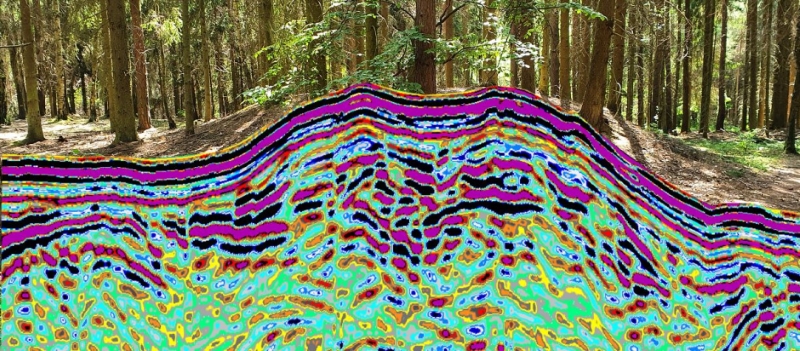
An unexcavated mound with grave markings. There is only a small depression in the layer above the grave, apparently caused by the subsidence of the filling of the grave.
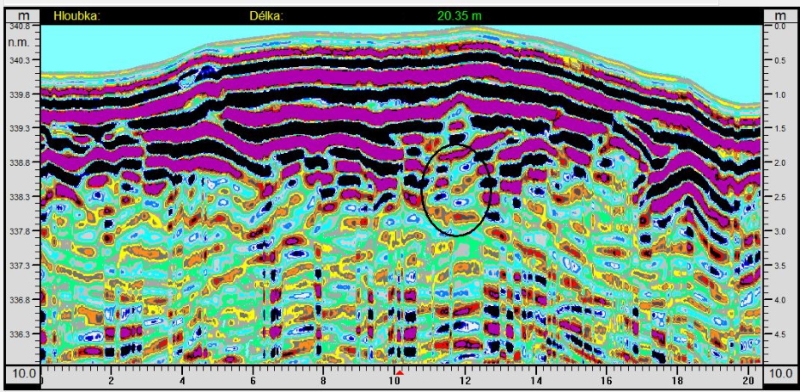
Also an unexcavated mound. It is easy to see the initial excavation in the ground in the shape of a “V”.
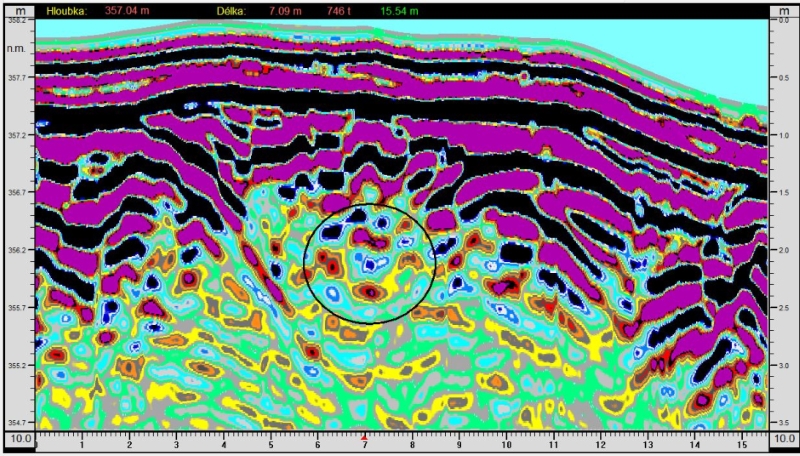
This “hill” is only a few decimeters above the surrounding terrain. Here, too, there is a V-shaped excavation and horizontal layers above it.
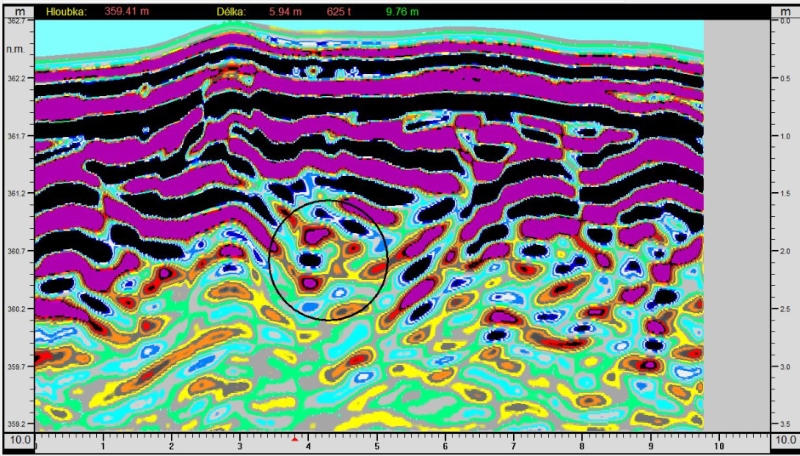
This excavation probably did not reach the burial area.
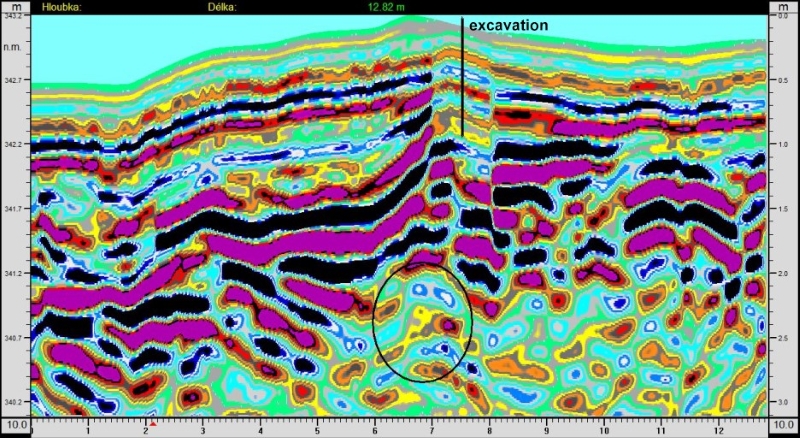
Two mounds next to each other.
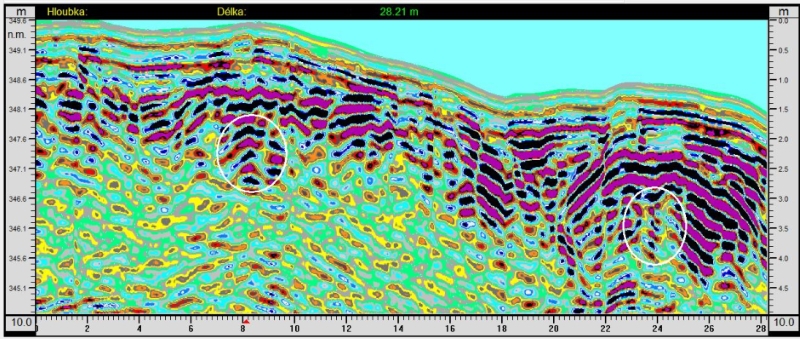
This may be an additional burial on the edge of the mound, it is more like reflections from more recent graves.
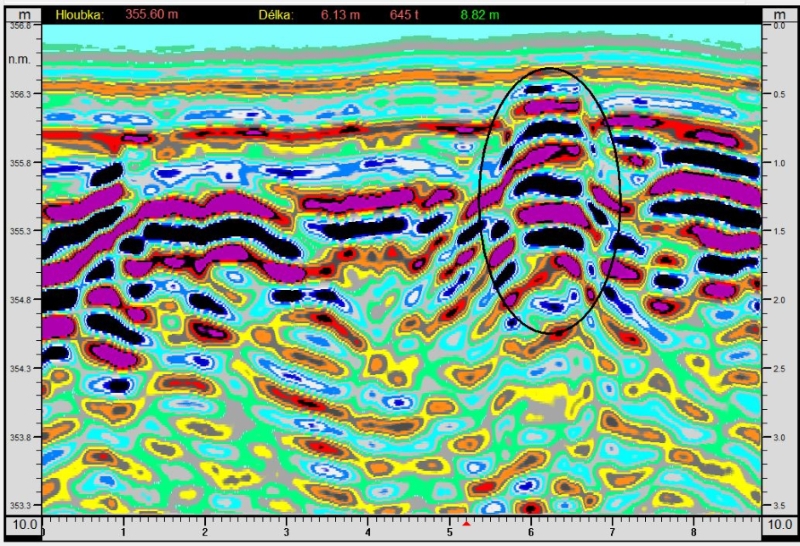
|